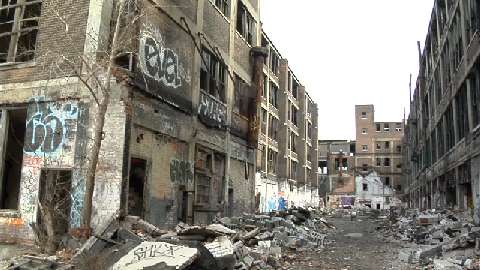The opening of “Motor City Breakdown,” Jerry Herron’s new Design Observer essay about the fall of Detroit and what it means for the rest of America:
“Why can’t we just get over Detroit — by common agreement, the most bankrupt, abandoned, misbegotten enterprise ever designed by Americans, at least so far as cities go — ‘the country’s most startling example of modern urban collapse,’ as the New York Times put it? Maybe it’s the sheer scale of the catastrophe being perpetrated here. The Times was reporting on the latest census of 700,000 souls, down from 1 million a decade ago and 1.8 million in 1950. Hardly a week goes by without national headlines about the murder rate or economic meltdown or impending civic bankruptcy (the biggest in U.S. history), or the Big Three automaker bailout, the corruption of public officials, the dumbfounding ineptitude of the electorate. Then there are the ruins that cast Detroit as a post-industrial Acropolis or Pompeii (except our ruins are larger), and the caravans of filmmakers and journalists and gawkers who want to get one last look, say one last word before the whole thing finally collapses. With all those end-of-everything narratives, you’d think by now we would have really reached the end — of conceivable stories, or patience — the end of Detroit as the ‘set for some movie about the last hours of the Planet Earth.’ That crack, by James Howard Kunstler, came 20 years ago, yet the end-of-time tourists keep returning to the set, locals too, which leads to my question: Why can’t we just let go?
Our preoccupation with Detroit is no accident. Americans are a designer people, a society of immigrants whose only common experience on this continent is the experience of coming from someplace else, willingly or otherwise. We have no shared origin, whether natives or newcomers. Instead we were born of ideas memorialized in the Declaration and Constitution. So we come naturally by our obsession with design, Detroit being probably the most important design project ever undertaken by Americans (after the Founding itself) — “the Silicon Valley of the Jazz Age,’ as Mark Binelli so aptly describes it, ‘a capitalist dream town of unrivaled innovation and bountiful reward.’ But here’s the tricky part. Is the spectacular — and spectacularly represented — failure of Detroit indicative of some larger design fault inherent in the very nature of American ideas, or is it simply a local one-off, an exception without deeper meaning?”

